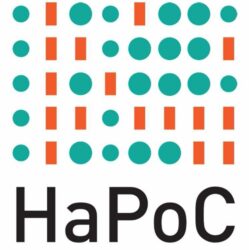Texts and contexts: the cultural legacies of Ada Lovelace
“That brain of mine is more than merely mortal; as time will show.”
A workshop for graduate students and early career researchers
Tuesday 8 December 2015
Mathematics Institute and St Anne’s College, Oxford
The m athematician Ada Lovelace (1815-1852), daughter of poet Lord Byron, is
celebrated as a pioneer of computer science. The notes she added to her
translation of Luigi Menabrea’s paper on Charles Babbage’s analytical engine
(1843) are considered to contain a prototype computer program. During her
short life, Lovelace not only contributed original ideas to the plans for
this early computer; she also imagined wider possibilities for the engine,
such as its application to music, and meditated on its limitations. Lovelace
leaves a legacy not just as a computer scientist, but also as a muse for
literary writers, a model to help us understand the role of women in science
in the nineteenth century, and an inspiration for neo-Victorian and
steampunk traditions.
As part of the University of Oxford’s celebrations to mark the 200th
anniversary of Lovelace’s birth, this one-day workshop will bring together
graduates and early career researchers to discuss t he varied cultural
legacies of this extraordinary mathematician. The day will feature an expert
panel including graphic novelist Sydney Padua and biographer Richard Holmes,
as well as a keynote address from Professor Sharon Ruston, Chair in
Romanticism in the Department of English and Creative Writing at Lancaster
University.
The day will conclude with a reception and buffet when there will be
opportunities to meet with speakers from the Ada Lovelace 200 Symposium,
which will also take place in the Mathematics Institute on the following two
days (9-10 December). Researchers from all disciplines are invited to submit
proposals for papers on the influences of Lovelace’s work, on topics
including, but not limited to, literature, history, mathematics, music,
visual art, and computer science. This might include:
* Lovelace’s place in the study of the history of science;
* Lovelace and women in scie nce in the nineteenth century;
* Early nineteenth-century scientific networks, including Lovelace’s
relationship with such individuals as Charles Babbage and Mary Somerville.
We also encourage papers which consider other scientific networks from this
period, beyond Lovelace’s circle;
* Lovelace and discussions about the role of the imagination in
scientific practice in the nineteenth century;
* Lovelace as translator and commentator;
* Mathematics and music, and the musical possibilities Lovelace
envisaged for Babbage’s engine;
* Lovelace’s own textual legacies, such as her correspondence,
childhood exercises and mathematical notes held in the Bodleian;
* Lovelace’s technological legacies, from her seminal work on
Babbage’s Analytical Engine to her impact on computer programming today;
* Lovelace’s role in the steampunk tradition, from Gibson and
Sterling’s The Difference Engine to Sydney Padua’s The Thrilling Adventures
of Lovelace and Babbage, and neo-Victorian fashion;
* Efforts and activities to commemorate and memorialise Lovelace, from
the recent Google Doodle to the annual Ada Lovelace Day.
Proposals, not exceeding 250 words, for 15-minute papers should be submitted
to adalovelaceworkshop@ell.ox.ac.uk
2015. Those who are accepted to speak at this graduate workshop will also be
offered free registration for the Ada Lovelace 200 Symposium taking place on
the following two days.
